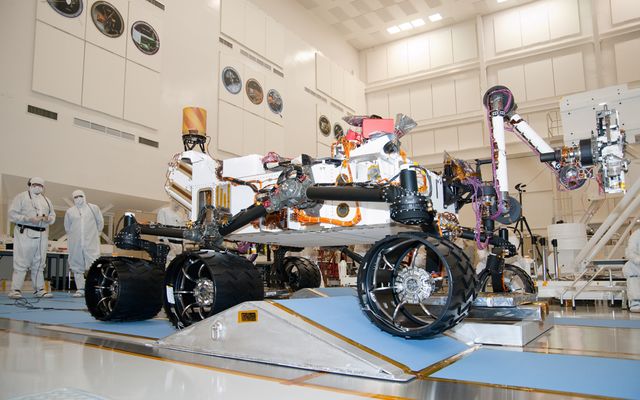Some newfound planets are something else
Re-evaluation suggests one-third of hot giant orbs are misclassified
By Nadia Drake
Web edition : Thursday, June 7th, 2012
When the Kepler spacecraft finds a giant planet closely orbiting a star, there’s a one in three chance that it’s not really a planet at all.
At least, that’s the case according to a new study that put some of Kepler’s thousands of candidate planets to the test using a complementary method for discovering celestial objects in stellar orbits. The results, posted June 5 on arXiv.org, suggest that 35 percent of candidate giants snuggled close to bright stars are impostors, known in the planet-hunting business as false-positives.
“Estimating the Kepler false-positive rate is one of the most burning questions in this field,” says astronomer Jean-Michel Désert of the Harvard-Smithsonian Center for Astrophysics, who has performed similar calculations for smaller planets.
Estimates by Désert and others place the false-positive rate at less than 10 percent, which isn’t necessarily contradictory given the different target populations of various research efforts.
“We cannot say anything about smaller planets,” says Alexandre Santerne, a graduate student at the University of Aix-Marseille in France and coauthor of the arXiv.org paper. “It’s just for giant planets close-in.”
Kepler looks for the periodic dimming of starlight produced by planets passing between Earth and their home stars near the constellation Cygnus. But not everything that darkens a star is a planet; smaller stars, for example, might masquerade as a planet. Instead of detecting periodic twinkles, Santerne and his colleagues looked for gyrations in host stars, the wiggles produced by orbiting planets’ gravitational tugs. Since heavy, nearby planets yank more noticeably on their stars, the team focused on giant candidates with orbits of 25 days or less.
Out of more than 2,300 possible planets, only 46 fell into that category. Eleven of these were already known planets. Santerne’s team confirmed nine more.
The remaining 26 candidates included 13 unknowns, two failed brown dwarf stars, and 11 members of binary star systems. “These can mimic clearly a planetary transit event,” says Santerne. “That’s why it’s so important to distinguish these things when you want to study planets and transits from the Kepler mission.”
After distributing the unknowns according to the observed ratios of objects, the team arrived at the 35 percent false-positive rate.
That number might seem high when compared with previous estimates, but scientists don’t consider it a serious flaw for Kepler. “This false-positive percentage is very low compared to all other transit programs,” says study coauthor and astronomer Claire Moutou, also at the University of Aix-Marseille.
The authors point to a discrepancy between their result and a 2011 study done by Timothy Morton and John Johnson at Caltech, who found a false positive rate closer to 5 percent. But comparisons between the two studies might not be so simple, Morton says, noting that the two groups calculated different things. Instead of looking at impostor rates in a specific population of planets, Morton determined the probability that any candidate — plucked from the sea of twinkling candidates — was real. He also excluded data from obvious impostors.
“Everything here is sort of a game of probabilities,” Morton says, pointing to the abundance of candidates. “It will be impossible to confirm them all with observations.”
As for current estimates of billions and billions of planets in the Milky Way, Moutou says those numbers are still valid. “Short period transiting planets are exotic objects, we don’t expect them to be everywhere,” she says. “The potential billion planets are more expected to be small, long-period planets. We didn’t kill those ones, fortunately.”










 Reply With Quote
Reply With Quote









